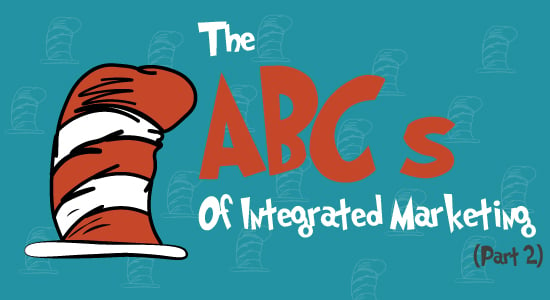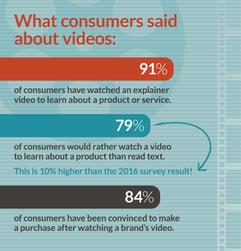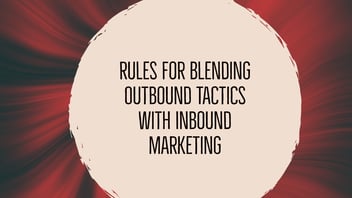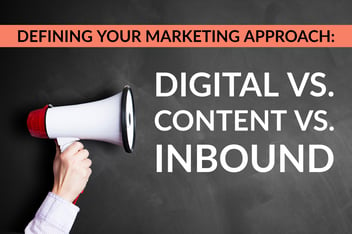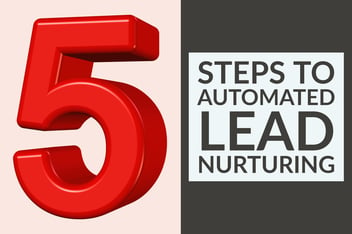Seuss-Inspired Marketing Definitions, Tips & Techniques (Part 2 of 2)
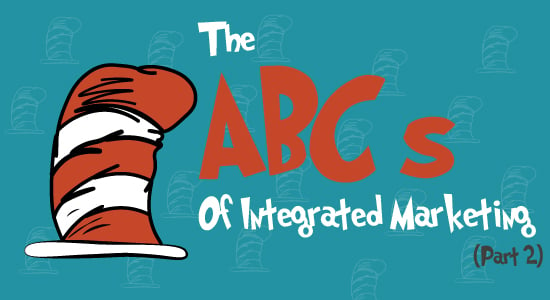
Did you read the first edition?
Get your fill of definitions?
Settle in for more marketing tips,
Know-how, insights and witty quips.
Last week, I shared half-an-alphabet’s worth of integrated marketing and PR tactics and techniques in honor of the March 2 birthday of Theodor Geissl, aka Dr. Seuss. While my little rhymes can’t match his talent for condensing stories into just a handful of the most basic words, I hope that this 26-point list does break down the basics of my marketing philosophy, as well as point readers to the in-depth articles and resources needed to make their marketing efforts more effective.
If you missed the first half of my rundown of 26 terms and concepts for successful integrated marketing – find it letters A through M here: The ABCs of Integrated Marketing In Honor Of Dr. Seuss (Part 1).
So, shall we continue?
N is for Nurturing
Back under “L” I talked about lead generation. Which is the most important objective for most marketers. But the job doesn’t end there. Just as important is lead nurturing—continuing contact with those leads in a way that builds a connection, builds trust and moves them along the sales funnel toward a sale. With as few as 1 in 10 new leads actually being ready to buy when they first engage with your website, automated nurturing workflows, featuring a series of emails offering additional content and offers, are essential tools to keep the conversation going until leads are qualified to move on to sales. More about qualified leads is coming up under “Q”! (Read more: 5 Things You Need To Know About Inbound Lead Nurturing Campaigns; then download our Lead Nurturing Toolkit, complete with a nurturing workflow template and example emails from a real campaign.)
O is for Outbound
At JONES, we are firm believers in the power of inbound marketing. After all, inbound leads typically cost less to generate than outbound leads. But that doesn’t mean outbound shouldn’t be a part of an integrated program. Instead, it means that the two should work together—complement a strong organic social media content program with targeted advertising, put the content marketing materials used for inbound marketing to work in settings like trade shows (when we can do those again), and focus on ROI to determine where you get the most bang for your buck. (Read more: How To Blend Outbound Tactics With Inbound Marketing.)
P is for Personas
Buyers personas are fictionalized, generalized representations of your ideal customers that help you understand your customers (and prospective customers) better, and make it easier for you to tailor content to the specific needs, behaviors, and concerns of different groups. Keep them in mind in order to personalize and target your content based on the needs of each audience—for example, the CFO who controls expenditures will want different information than the IT lead who will implement the software. Create content for both personas that addresses the pain points of each. (Read more: Segment Content & Offers Based On Personas and the Buying Cycle.)
Q is for Qualified Leads
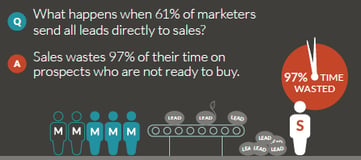
Many businesses shuttle every lead, as soon as they are identified straight to sales. What happens then? Sales wastes 97 percent of their time on leads who are not ready or able to buy. Instead, marketing should use closed loop marketing and lead nurturing to guide and evaluate leads for five criteria: need, fit, budget, influence level and timeline. Only when the lead meets the definitions your company has agreed on for a qualified lead should the lead be passed on to sales for more direct contact. (Read more: 5 Ways Lead Qualification Can Improve Sales Conversion Rates.)
R is for Repurpose
When a company silos its communications efforts into different departments—marketing, PR, social media, etc.—and fails to work from a common strategy, time and money are wasted on creating content that is only used one way. Instead, think about how to repurpose content in multiple ways. Share tidbits from blog posts as social media content. Turn webinars into blog posts by transcribing them. Use graphics from videos to create infographics and vice versa. And use the original research I’ll talk about in the next section in as many different ways as possible. (Read more: Repurpose Content To Maximize Impact.)
S is for Surveys
 Original research is a key element in developing compelling marketing content for at least half of all B2B marketers. For many of them, surveys are the chosen research method. JONES and our client West used surveys of consumers and healthcare providers (West’s customers) to develop a decade of strong marketing content that helped earn the company media coverage, lead generation and sales. (Watch the video: How To Use Surveys To Fuel Your Content Marketing Strategy.)
Original research is a key element in developing compelling marketing content for at least half of all B2B marketers. For many of them, surveys are the chosen research method. JONES and our client West used surveys of consumers and healthcare providers (West’s customers) to develop a decade of strong marketing content that helped earn the company media coverage, lead generation and sales. (Watch the video: How To Use Surveys To Fuel Your Content Marketing Strategy.)
T is for Titles and Other Blog Elements
Business blogs are powerful tools for building website SEO and driving inbound marketing by providing useful content to prospects, leads and customers. When creating a business blog, the most important thing to remember is to provide quality content. But details also matter: blog length, blog promotion, titles, formatting and variety. (Read more: Why You Should Start A Business Blog Now—SEO & Lead Generation.)
U is for User-Generated Content
One tactic for improving engagement in your marketing content, especially on social media, is to invite your customers, followers and fans to create that content for you. JONES was among the first marketing and PR agencies to invite users to create content when we helped FNBO Direct launch as one of the country’s first online banks with the Pay Yourself First campaign. (Download the case study: Social Media & PR Buzz Leverages Limited Marketing Budget For Impressive Launch.)
V is for Video
Nearly four out of five consumers say they would rather watch a video to learn about a product than read text. Are you giving them what they want? Incorporate video into your marketing content mix by utilizing it on your website, in your business blog, on your social media channels, and in any other creative ways you can think of. (Read more: Secrets for Video Marketing Success—What West & JONES Did Right.)
W is for Website
Is there really any part of your marketing strategy that is more important than your company website? It is what drives search engine rankings, it is where visitors can be converted into leads, it may be where a majority of your sales take place. That means you need to finetune your website from multiple perspectives, including content, infrastructure and user experience. Download our Website Audit Template to take a hard look at your current website and determine where there are opportunities for improvement. (Read more: Your Guide To Web Strategy & The State of Marketing.)
X is for XML Site Maps, Meta Data and Other Behind the Scenes Web Essentials
As marketers, we may not always be fluent in the vernacular of web designers and software engineers, but it pays to understand a few of the basics that are important to how the content we create interacts with search engines and how the structure of a website determines how readers interact with our content. (Download the cheat sheet: Microdata, Schema & Rich Snippets.)
Y is for YouTube
Whether you consider YouTube to be truly a social media channel or not, it is, by default, the second most used “search engine” in the world. The platform processes more than 3 billion searches every month. And since you are using video in your marketing anyway, (right?), it only makes sense to have a presence on YouTube as well. (Read more: What, When & How Often To Post On YouTube.)
Z—Zzzz….
Are you tired yet? While it may be more exhausting than the messes created by Thing 1 and Thing 2, this list isn’t exhaustive—there is more to learn all the time about integrated marketing and PR. Which is why we offer a subscription to this blog, so you can get the latest posts delivered right to your email each week. Subscribe now.
So, will you join us on the ‘net?
Join the list if you haven’t yet.
Talk to me if we can be
The extra resource that you need
For all those goals you haven’t met.
-1.png?width=1652&height=294&name=Jones(RGB)-1.png)

